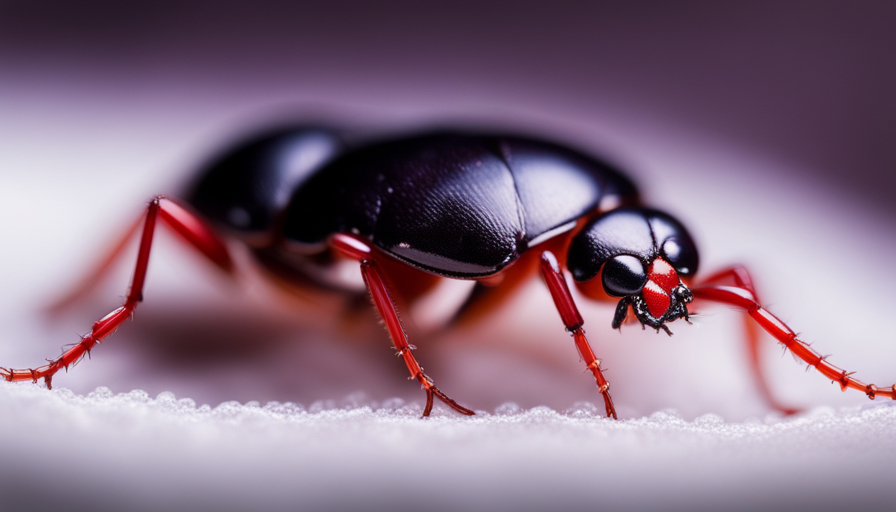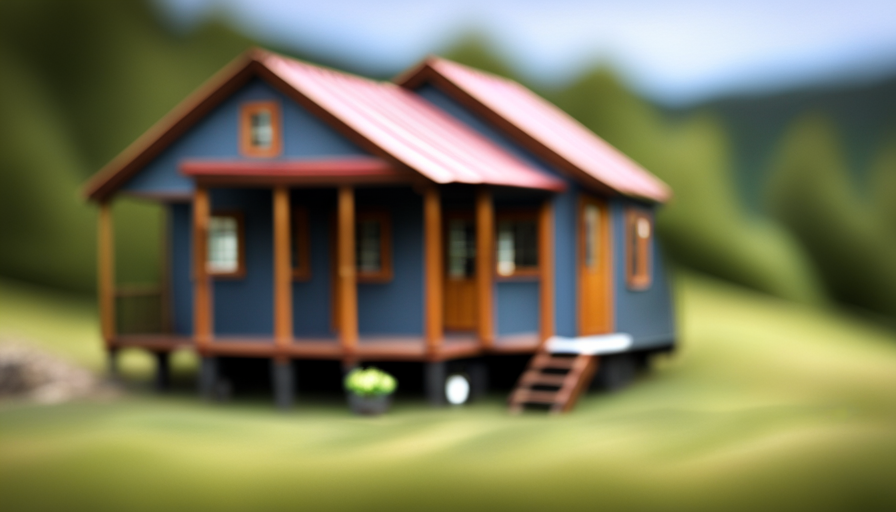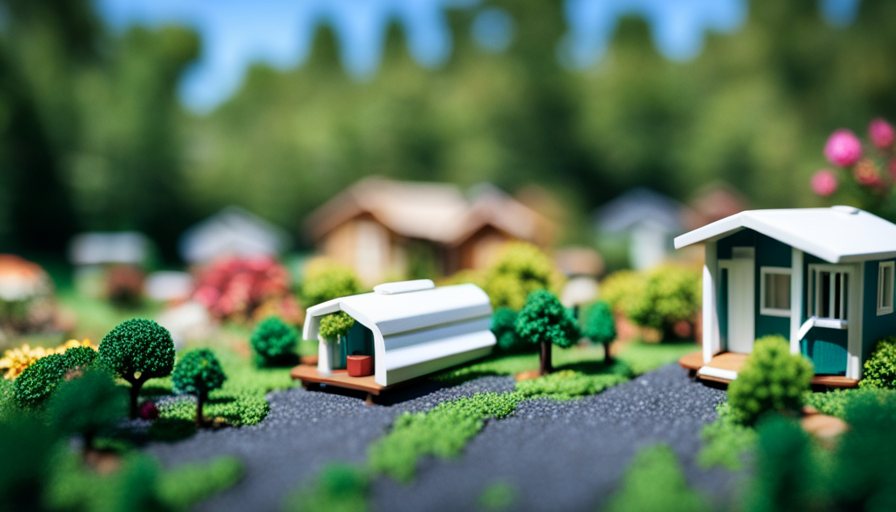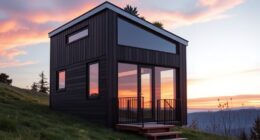Picture this: you’re cozied up in a cozy living space, holding a steaming cup of coffee, while gazing out at tranquil natural views through large windows. And the best part? This small abode is all yours. These tiny homes have become trendy among individuals embracing a minimalist lifestyle or seeking a simpler way of living.
But how much does it actually cost to buy a tiny house? In this article, I’ll break down the various factors that contribute to the overall price tag. From the size and location of the tiny house to the materials used in its construction and additional amenities, there are many variables to consider.
We’ll also delve into labor and construction costs, maintenance and upkeep, as well as the resale value and any hidden costs that may arise. So, if you’re curious about the financial aspects of owning a tiny house, read on to find out more.
Key Takeaways
- The cost of buying a tiny house depends on factors such as size, location, materials, and amenities.
- Tiny houses offer the opportunity for creative interior design and multi-purpose spaces due to their compact size.
- It is important to consider the location of a tiny house, taking into account factors such as affordability, convenience, and adherence to building codes.
- Sustainable materials and insulation can contribute to energy efficiency and reduce the environmental impact of a tiny house.
Size of the Tiny House
If you’re looking for a cozy and compact living space, you’ll love how the size of a tiny house allows you to effortlessly navigate from room to room, feeling like you’re walking through your very own enchanting dollhouse.
One of the advantages of a tiny house is that it requires less furniture, which can significantly reduce costs. With limited space, you only need to invest in the essentials, such as a bed, a small dining table, and a couple of chairs. This minimalist approach not only saves money but also encourages a clutter-free living environment.
Additionally, the size of a tiny house allows for creative interior design solutions. By maximizing every inch, you can create functional multi-purpose spaces. For example, a loft area can serve as a bedroom, while the living room can double as a workspace. This versatility makes tiny houses an attractive option for those seeking a practical yet stylish living arrangement.
Moving on to the next section about the location of the tiny house, it’s important to consider a few key factors.
Location of the Tiny House
When looking for a location for your compact dream home, you’ll find that the world is as wide open as a vast ocean, ready to be explored. The accessibility of tiny house locations is an important factor to consider.
Many tiny house enthusiasts choose to settle in rural areas, where land is more affordable and zoning regulations are more lenient. This allows for a greater variety of options when it comes to finding a suitable plot of land. However, it’s important to consider the proximity to amenities such as grocery stores, medical facilities, and employment opportunities.
On the other hand, some individuals prefer to place their tiny homes in urban areas, taking advantage of the convenience and accessibility of city living. However, finding suitable and affordable parking spaces can be a challenge in crowded urban environments.
In addition to accessibility, the environmental impact of tiny house locations should also be taken into account. Many tiny house owners strive to live a more sustainable lifestyle, and choosing a location that aligns with this goal is essential. Look for areas that have access to renewable energy sources, such as solar or wind power. Consider the impact on local ecosystems and the availability of water resources. It’s also important to research local building codes and regulations to ensure that the location allows for environmentally-friendly construction practices.
Transitioning into the subsequent section about materials used in the construction, it’s important to consider not only the location, but also the materials used to build your tiny house.
Materials Used in the Construction
To maximize the sustainability and durability of your compact dream home, you should carefully select the materials that will be used in its construction. One crucial aspect to consider is the type of insulation used. Insulation plays a vital role in maintaining a comfortable temperature inside the tiny house while reducing energy consumption.
There are various types of insulation available, such as fiberglass, spray foam, cellulose, and rigid foam. Each has its advantages and disadvantages, so it’s essential to research and choose the one that best fits your needs and budget.
In addition to insulation, using eco-friendly materials is another important factor to consider. Opting for sustainable materials not only benefits the environment but also contributes to the overall health and well-being of the occupants. Eco-friendly materials can include reclaimed wood, bamboo, recycled metal, and low VOC paints. These materials are often produced using sustainable practices and have a lower impact on the environment.
By carefully selecting the types of insulation and incorporating eco-friendly materials, you can create a tiny house that is both environmentally conscious and comfortable to live in.
In the next section, we will discuss additional amenities that you can consider to enhance your tiny house living experience.
Additional Amenities
Consider adding some extra amenities to enhance your compact dream home living experience. When it comes to tiny houses, the possibilities are endless. You can choose to include additional amenities that suit your lifestyle and make your tiny house feel like a cozy retreat.
One popular option is to install solar panels, which not only contribute to energy efficiency but also reduce your carbon footprint. Another amenity to consider is a composting toilet, which is not only environmentally friendly but also saves water. Additionally, you may want to invest in a rainwater harvesting system, which can help you conserve water and reduce your utility bills.
Other amenities that can add comfort and convenience to your tiny house include a washer and dryer combo, a dishwasher, and built-in storage solutions. These additional amenities can make your tiny house more functional and enjoyable to live in.
As you plan your tiny house, it’s essential to consider the costs associated with these extra features.
Transitioning to the next topic, let’s explore the labor and construction costs involved in building a tiny house.
Labor and Construction Costs
Get ready to dive into the realm of labor and construction costs, where you’ll discover the intricacies and financial aspects of bringing your compact dream home to life. When it comes to building a tiny house, labor costs and construction materials are two major factors that contribute to the overall expenditure. The labor costs will depend on the complexity of the design, the experience of the builders, and the location of the project. In some cases, you may be able to save on labor costs by opting for a DIY approach, but keep in mind that constructing a house requires specialized skills and knowledge.
To give you an idea of the potential expenses, let’s take a look at a comparison table below highlighting the average labor costs and construction materials for different stages of building a tiny house:
| Stage of Construction | Labor Costs | Construction Materials |
|---|---|---|
| Foundation | $X | $Y |
| Framing | $X | $Y |
| Plumbing | $X | $Y |
| Electrical | $X | $Y |
| Interior Finishes | $X | $Y |
Remember that these figures are just estimates, and actual costs can vary based on factors such as location, complexity of design, and the level of customization desired. Once you have a clear understanding of the labor costs and construction materials involved, you can explore financing options to bring your tiny house dreams to fruition.
Now let’s move on to the next section and delve into the various financing options available for your compact abode.
Financing Options
Explore the different financing options to make your compact dream home a reality. When it comes to buying a tiny house, there are several ways to finance your purchase.
One option is to secure a traditional mortgage loan. However, it’s important to note that not all lenders offer financing for tiny houses, as they may have minimum loan amounts or specific requirements.
Another option is to consider a personal loan, which can be used to fund the purchase of a tiny house. Personal loans typically have higher interest rates than mortgages, but they offer more flexibility in terms of eligibility requirements.
Alternatively, you may want to explore RV loans, as some tiny houses are classified as recreational vehicles. These loans are specifically designed for mobile homes and may have more lenient lending criteria.
Additionally, there are alternative financing options available, such as crowdfunding or using your savings. Remember to consider your loan eligibility and financial situation before deciding on the best financing option for your tiny house.
Now that you have explored the financing options, let’s delve into the next important aspect of owning a tiny house: maintenance and upkeep.
Maintenance and Upkeep
Maintaining your compact dream home can be a challenge, but how can you ensure that it stays in top condition for years to come? One of the key factors to consider when buying a tiny house is the maintenance costs. While tiny houses are generally cheaper to maintain compared to traditional houses, there are still ongoing expenses to consider.
These may include regular cleaning, repairs, and updates to keep your tiny house in good shape. It’s important to budget for these costs to ensure the long-term sustainability of your tiny house.
Regular maintenance is crucial to keep your tiny house functioning properly and to avoid costly repairs in the future. This may involve inspecting the roof for leaks, checking the plumbing and electrical systems, and maintaining the exterior siding. Additionally, you may need to invest in occasional upgrades or renovations to accommodate your changing needs or to keep up with the latest trends in tiny house living.
Maintaining a tiny house requires careful consideration of maintenance costs and regular upkeep. By budgeting for these expenses and staying proactive in your maintenance efforts, you can ensure that your compact dream home remains in top condition for years to come.
Transitioning into the subsequent section about ‘resale value,’ it’s also important to note that proper maintenance can increase the resale value of your tiny house.
Resale Value
To ensure your compact dream home holds its value, it’s crucial to consider the potential resale value. When it comes to tiny houses, their resale value can vary depending on several factors, including location, size, and the quality of materials used in construction. Understanding the depreciation rate of tiny houses can also give you an idea of how much value you can expect to retain over time.
To illustrate the potential resale value of a tiny house, let’s take a look at the following table:
| Tiny House | Purchase Price | Resale Value |
|---|---|---|
| House A | $50,000 | $45,000 |
| House B | $60,000 | $50,000 |
| House C | $70,000 | $60,000 |
As you can see, there is a depreciation rate of approximately 10% to 20% for these examples. This means that if you decide to sell your tiny house after a few years, you can expect its value to decrease by around 10% to 20%.
Considering the potential depreciation rate can help you make an informed decision about your investment in a tiny house. However, it’s important to keep in mind that there are also hidden costs associated with owning a tiny house. These costs can include maintenance, utilities, and insurance.
Hidden Costs
When considering the cost of purchasing a tiny house, it’s essential to account for any hidden costs that may arise.
These unexpected expenses can include repairs, maintenance, or even upgrades to make the house more livable.
Additionally, it’s crucial to budget for permits, inspections, and other legal requirements that may be necessary when buying a tiny house.
By being prepared for these hidden costs and budgeting accordingly, you can ensure that your tiny house investment remains within your financial means.
Account for any unexpected expenses that may arise
Don’t overlook any unexpected expenses that might pop up when buying a tiny house! It’s important to account for any unexpected repairs or emergencies that may arise. Even though tiny houses are often more affordable than traditional homes, they still require regular maintenance and repairs just like any other dwelling. It’s a good idea to set aside a budget specifically for unexpected expenses, so you’re prepared when something unexpected happens. To help you plan ahead, here’s a table outlining some potential unexpected costs that you should consider:
| Unexpected Expense | Estimated Cost |
|---|---|
| Roof repairs | $2,000 – $5,000 |
| Plumbing issues | $500 – $2,000 |
| Electrical problems | $500 – $1,500 |
Remember, these are just estimates and costs can vary depending on the severity of the issue. By budgeting for emergencies, you can ensure that you’re financially prepared for any unexpected expenses that may come your way. Now, let’s move on to the next section and discuss how to budget for permits, inspections, and other legal requirements.
Budget for permits, inspections, and other legal requirements
Make sure you have your financial ducks in a row because navigating the legal requirements for permits and inspections can be like a complex dance routine. When budgeting for your tiny house, it’s important to account for the costs associated with obtaining permits, inspections, and meeting other legal requirements.
These expenses can vary depending on your location and the size of your tiny house. It’s a good idea to research the specific regulations in your area and consult with local authorities to get an accurate estimate of these costs.
Additionally, don’t forget to include the cost of insurance and utilities in your budget. Insurance is important to protect your investment and cover any unforeseen damages or accidents. And while tiny houses are known for their energy efficiency, you’ll still need to budget for the cost of utilities.
As you plan your overall budget and financials, it’s crucial to consider these additional expenses to ensure a smooth and hassle-free tiny house journey.
Overall Budget and Financial Planning
To properly plan your overall budget for buying a tiny house, it’s essential to consider all the financial aspects. Here are some budgeting tips and cost-saving strategies to help you make informed decisions:
-
Research and compare prices: Start by researching the average cost of tiny houses in your desired area. This will give you a baseline to work with and help you determine a realistic budget.
-
Consider building materials: The choice of building materials can significantly impact the cost of your tiny house. Opting for more affordable materials like reclaimed wood or repurposed materials can help you save money without compromising on quality.
-
DIY vs. hiring professionals: If you have the necessary skills and experience, building your tiny house yourself can save you a significant amount of money. However, if you’re not confident in your abilities, it’s best to hire professionals to ensure a safe and well-built structure.
-
Factor in additional costs: Apart from the actual cost of the tiny house, don’t forget to budget for other expenses such as permits, inspections, insurance, and ongoing maintenance.
-
Explore financing options: If purchasing a tiny house outright is not feasible, consider exploring financing options such as personal loans or RV loans. Make sure to compare interest rates and terms to find the most affordable option.
By following these budgeting tips and cost-saving strategies, you can make the most of your financial resources and ensure a smooth and affordable journey towards owning a tiny house.
Frequently Asked Questions
Can I legally place a tiny house on any piece of land?
Placing a tiny house on any land comes with legal implications and land restrictions. It’s crucial to research local zoning laws, building codes, and permits before making any decisions.
Are there any zoning restrictions or regulations that I need to be aware of when buying a tiny house?
When buying a tiny house, it is important to be aware of zoning restrictions, regulations, and land requirements. Additionally, consider customization options and insurance requirements to ensure compliance and a smooth living experience.
What is the average lifespan of a tiny house?
On average, tiny houses have a lifespan of around 10-30 years. However, this can vary depending on maintenance. Regular upkeep, such as repairs and renovations, can help extend the life of a tiny house and minimize maintenance costs.
Can a tiny house be customized or modified after it is built?
Yes, a tiny house can be customized and modified after it is built. There are various customization options available, allowing for personalization and renovation possibilities to make the space fit your needs and preferences.
Are there any specific insurance requirements for owning a tiny house?
Insurance coverage for a tiny house is necessary to protect against potential damages or accidents. Cost considerations include the value of the house and the specific coverage needed. It’s important to research and compare insurance options to find the best fit.
Conclusion
In conclusion, when considering the purchase of a tiny house, it’s essential to take into account various factors such as the size, location, materials used, and additional amenities.
While it may seem like a cost-effective option, one must not overlook the hidden costs and maintenance expenses that come with owning such a property. However, with proper budgeting and financial planning, a tiny house can provide a unique and minimalist lifestyle that brings a sense of fulfillment and freedom.
Hi, I’m Emma. I’m the Editor in Chief of Tiny House 43, a blog all about tiny houses. While tree houses are often associated with childhood, they can be the perfect adult retreat. They offer a cozy space to relax and unwind, surrounded by nature. And since they’re typically built on stilts or raised platforms, they offer stunning views that traditional homes simply can’t match. If you’re looking for a unique and romantic getaway, a tree house tiny house might just be the perfect option.










